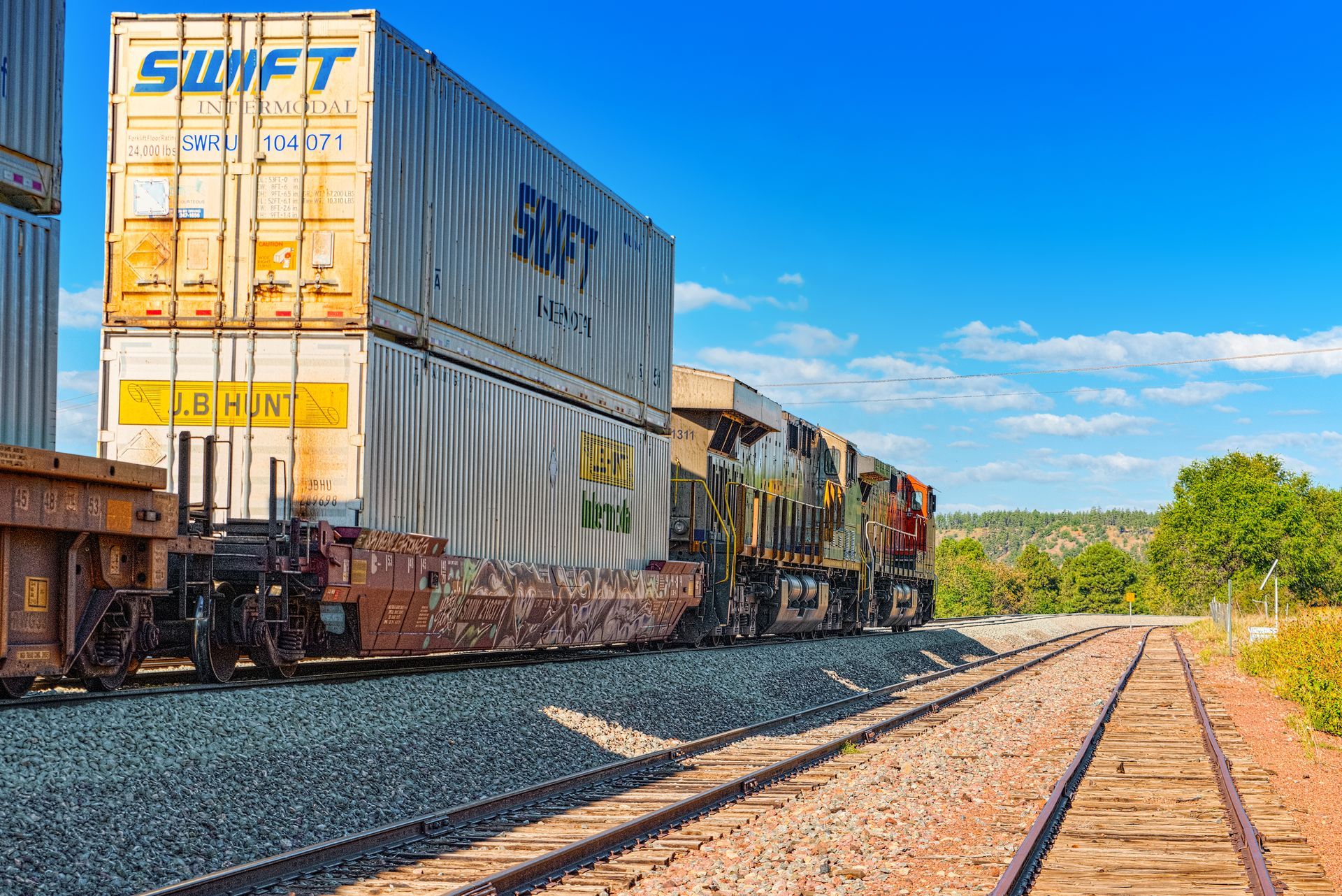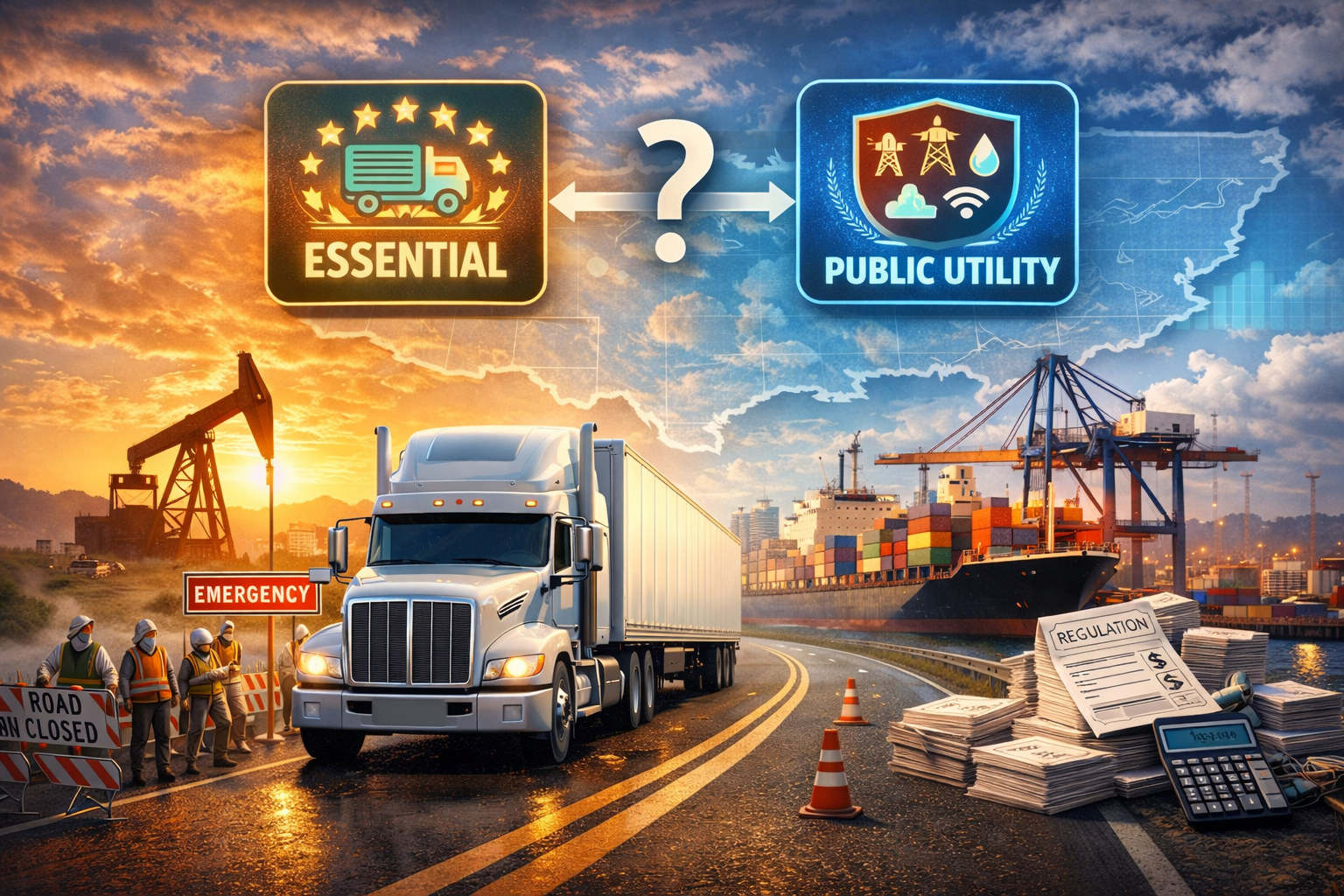Mega Rail Acquisition Will Impact Trucking Freight Volumes
Share this Article:

The U.S. transportation industry is bracing for a transformational shift as Union Pacific (UP) moves to acquire Norfolk Southern (NS) in one of the largest rail mergers in decades. The proposed acquisition would create a coast-to-coast rail giant connecting the West Coast, Midwest, and Eastern Seaboard—effectively redrawing the competitive map of North American freight.
While the deal is still pending regulatory approval, its implications are already rippling through the logistics sector. Chief among them is the expected impact on the trucking industry, especially in areas such as:
- Freight volumes (in trucking tons)
- Cost per mile for freight movement
- Trucking profit margins
- Trucking bankruptcies
- Consolidation and mergers across transportation sectors
This article breaks down each of these impacts in detail and explains how industry players should prepare for the coming realignment.
Rail and Trucking: Interlinked but Competitive
For decades, rail and trucking have operated in a complementary yet competitive fashion. Rail moves about 28% of U.S. freight ton-miles, while trucking dominates the short-haul and last-mile segments with about 72% of freight by tonnage. The rise of intermodal freight, where goods are shipped via multiple modes (usually rail + truck), has intensified this relationship.
The Union Pacific–Norfolk Southern merger would create a truly transcontinental rail system, enabling uninterrupted rail service from Los Angeles to Atlanta, and from Seattle to the ports of Virginia. This significantly enhances rail's competitive position over long-haul trucking, especially for shippers looking to cut costs.
How the Merger Will Impact Trucking Freight Volumes
Shift to Intermodal Rail
One of the first and most visible consequences of the acquisition will be a significant shift of freight from trucks to rail, especially intermodal shipments.
The newly combined rail network will offer:
- More direct intermodal corridors
- Lower transit times between major ports and inland hubs
- Economies of scale that reduce the cost per container
Major corridors likely to see freight diversion from truck to rail include:
- Los Angeles ↔ Atlanta
- Dallas ↔ Charlotte
- Chicago ↔ Norfolk
- Kansas City ↔ Savannah
According to industry estimates, this shift could pull as much as 5–8% of truckload freight volume off the highways over the next three to five years.
Estimated Trucking Tons Lost
The American Trucking Associations (ATA) reports that the U.S. trucking industry hauls about 11.5 billion tons of freight annually. If 4–5% of that moves to rail, the trucking industry could lose over 400 million tons per year in long-haul freight—a staggering blow concentrated on large national carriers and long-haul routes.
Short-haul and regional carriers will be less affected, but OTR (over-the-road) carriers will bear the brunt.
Cost Per Mile: Downward Pressure
How Rail Lowers Freight Costs
Railroads move freight more efficiently over long distances. According to the Association of American Railroads (AAR), trains can move a ton of freight over 470 miles on a single gallon of fuel. This efficiency translates to lower rates for shippers.
Whereas long-haul trucking averages $2.05 per mile, intermodal rail can offer rates closer to $0.85–$1.15 per mile, especially on lanes over 1,000 miles.
The combined UP-NS network will allow for more direct east-west intermodal services, cutting out handoffs and inefficiencies. As a result:
- Rail rates may drop 5–10% in targeted lanes
- Trucking rates will feel downward pressure, especially in contract negotiations
- Brokers and shippers will have more leverage when choosing modes
Margin Squeeze on Trucking
At the same time, trucking costs continue to rise due to:
- Fuel price volatility
- Equipment and insurance inflation
- Driver shortages and wage hikes
- Regulatory compliance costs
This divergence between rising costs and declining pricing power could compress profit margins industry-wide—especially for carriers unable to pivot into regional, niche, or intermodal-support roles.
Impact on Trucking Profits
Profitability Trends
Public carriers like Knight-Swift and J.B. Hunt have already flagged lower operating ratios in recent quarters due to soft volumes and competitive pressure. This trend will likely deepen post-merger.
Mid-size carriers operating in high-volume corridors—particularly from the Midwest to the Southeast—will face:
- Reduced revenue per truck
- Higher empty mile ratios
- Tougher rate negotiations
Forecasts suggest that average net profit margins in truckload freight could fall from 6.5% in 2023 to under 4% by 2026 for those heavily exposed to long-haul lanes now being targeted by rail.
Winners and Losers
Winners:
- Trucking companies with intermodal partnerships
- Regional LTL carriers
- Drayage and first-mile/last-mile operators
Losers:
- Long-haul OTR operators
- Non-asset 3PLs with limited modal flexibility
- Carriers with high fixed costs and low rate flexibility
A Surge in Trucking Bankruptcies?
Current Strains
Even before this rail acquisition, trucking bankruptcies had been on the rise. According to Broughton Capital and FreightWaves, over 1,600 carriers exited the market in 2024, largely due to:
- Spot rate softness
- Fuel cost volatility
- Increasing debt loads from pandemic-era fleet expansions
Merger-Related Fallout
As the merged UP-NS entity pulls freight volume and pricing power away from trucks, expect a second wave of bankruptcies—especially among:
- Small carriers dependent on spot freight
- Mid-size fleets locked into uncompetitive contract terms
- Operators with high leverage or limited cash flow
Estimates suggest 2,000–2,500 additional carrier exits by 2027. The fallout will hit some regions harder than others—particularly the Southeast, Ohio Valley, and Southern California.
Transportation Mergers: Domino Effect
Trucking Consolidation Will Accelerate
To survive and compete, many trucking firms will pursue:
- Strategic M&A to gain scale and diversify offerings
- Tech integration for load optimization and routing
- Modal diversification into LTL, final mile, or warehousing
Recent examples:
- Knight-Swift acquiring U.S. Xpress
- TFI International expanding its LTL and dedicated divisions
- Werner and ArcBest investing heavily in 3PL technology
Expect more roll-ups of regional players and increased activity in distressed asset sales.
Rail-Broker Collaboration Will Grow
This merger may also encourage tighter integration between rail carriers and logistics providers. Look for:
- Rail–broker joint ventures
- Co-branded intermodal offerings
- Tech-driven visibility platforms to support rail-truck integration
Truckers who embrace these changes and reposition as logistics partners—not just asset providers—stand to benefit.
What This Means for Shippers, Brokers, and Drivers
Shippers
Pros:
- Lower rates on long-haul freight
- Better intermodal coverage from coast to coast
- More carrier options in integrated supply chains
Cons:
- Learning curve in managing intermodal freight
- Risk of delays during rail network integration
- Less redundancy in modes if trucking capacity contracts
Freight Brokers
Pros:
- Opportunity to offer modal flexibility and optimization
- Chance to grow intermodal brokerage offerings
Cons:
- Margin pressure on traditional TL brokerage
- Need to invest in rail rate knowledge and capacity access
Truck Drivers
Long-haul drivers will see the biggest impact:
- Potential for reduced miles and earnings
- Consolidation of routes and terminals
But growth may emerge in:
- Regional driving
- Port and terminal drayage
- Dedicated, private fleet operations
Retraining and geographic flexibility will be key to long-term stability.
Regulatory and Infrastructure Outlook
Surface Transportation Board Scrutiny
The STB is reviewing the UP–NS deal carefully, focusing on:
- Market power and competition
- Service quality during integration
- Access for short-line railroads
Expect some conditions imposed—like terminal access provisions or service guarantees—but the merger is likely to proceed, given the precedent set by recent CP–KC Southern consolidation.
Infrastructure Investment Boom
Post-merger, expect:
- New intermodal terminals
- Upgraded rail yards and drayage infrastructure
- Greater emphasis on digital platforms for shipment visibility
Trucking companies with the capital to co-invest or co-locate near these hubs will benefit the most.
Conclusion: Disruption Is Opportunity for the Prepared
The Union Pacific–Norfolk Southern acquisition represents more than a business deal—it’s a strategic inflection point for the transportation industry.
While trucking volumes, profit margins, and company count may shrink in the near term, those who adapt will find new niches, new partners, and new ways to serve a rapidly evolving freight economy.
The winners will be:
- Intermodal-savvy
- Tech-forward
- Financially disciplined
- Strategically agile
Those who cling to the status quo? They may find themselves outmaneuvered—not just by railroads, but by the freight ecosystem of tomorrow.
Share with Us:




